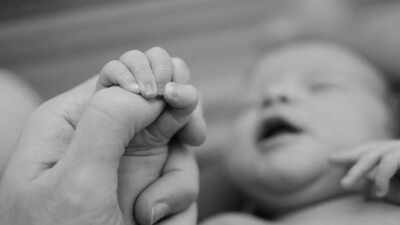ARTICLE AD BOX

An Ohio couple has given birth to a baby boy developed from an embryo that had been frozen for more than 30 years, which their doctor believes may be the longest-known storage time before a successful birth.Lindsey and Tim Pierce, who struggled with infertility for years, turned to embryo adoption in hopes of starting a family. As per CNN, they welcomed a son born from an embryo that had been frozen for 11,148 days. According to Dr. John Gordon of Rejoice Fertility in Knoxville, Tennessee, who oversaw the procedure, that storage time appears to set a new record.
What is embryo adoption?
Embryo adoption is a process in which individuals or couples adopt donated embryos left over from another couple’s in vitro fertilization (IVF) cycle.
Unlike traditional adoption, it allows the adoptive mother to carry and give birth to a genetically unrelated child.

Although the concept dates back to the 1990s, it remains relatively rare. According to the U.S. Centers for Disease Control and Prevention, about 2% of all U.S. births are the result of IVF, and only a small portion of those involve donated embryos. Medical experts estimate that around 1.5 million frozen embryos are currently stored across the country, many in limbo, awaiting a decision from their genetic parents.
Some fertility clinics and advocacy groups, particularly Christian-based organizations, have become vocal opponents of discarding frozen embryos, citing a belief that life begins at conception. Among them is Snowflakes Embryo Adoption, a program under Nightlight Christian Adoptions that connects embryo donors and adoptive families.“These little embryos deserved to live.”Linda Archerd, 62, is the woman who donated the embryos that led to the Pierces’ baby.
Speaking with The Associated Press, she said, “I felt all along that these three little hopes, these little embryos, deserved to live just like my daughter did.”Archerd turned to IVF back in 1994. At the time, techniques for freezing, thawing, and transferring embryos were gaining traction and offering hopeful parents more chances at successful pregnancy. She ended up with four embryos but only used one after giving birth to a daughter.
Following a divorce, her plans for more children shifted.As decades passed, Archerd said she wrestled with the decision of what to do with the remaining embryos. Storage fees mounted, and the emotional toll weighed heavy. Eventually, she discovered Snowflakes, which helped facilitate an open donation.“I wanted to be a part of this baby’s life,” she said. “And I wanted to know the adopting parents.”

The process wasn't easy.
Archerd had to track down her original fertility doctor in Oregon and navigate paper records to prepare the embryos for donation. The embryos were then shipped to Rejoice Fertility in Tennessee — a clinic known for its refusal to discard embryos, even those stored in older and outdated containers.
Delicate transfer
Of the three embryos Archerd donated, one did not survive the thawing process. The remaining two were transferred into Lindsey Pierce’s uterus, and one successfully implanted.Following the birth, Lindsey and Tim Pierce issued a statement through: “We didn’t go into this thinking about records — we just wanted to have a baby.” For Archerd, the outcome has been bittersweet. “I’m hoping that they’re going to send pictures,” she said. “I’d love to meet them some day. That would be a dream come true to meet — meet them and the baby.” So far, the Pierces have sent several photos since the birth.



.png)
.png)
.png)
















 11 hours ago
7
11 hours ago
7









 English (US) ·
English (US) ·